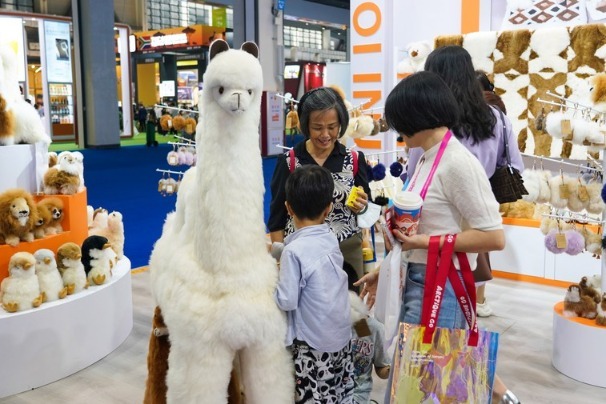Favorable policies aim to spur border, international trade

China's efforts to develop its border-area-located and cross-border economic cooperation zones into high-level open platforms are likely to stimulate the growth of trade in both goods and services, as well as the internationalization of its currency in the coming year, said trade experts on Friday.
The government issued a circular outlining 15 measures aimed at bolstering the layout and functions of border and cross-border economic cooperation zones. These measures include the addition of new zones and the expansion of existing ones, the Ministry of Commerce said in an online statement on Thursday.
Apart from calling for more efforts in building these zones to better develop border trade, processing and manufacturing, production-related services, logistics and procurement, the government will encourage and support these zones to expand international cooperation, including ensuring the smooth flow of cross-border logistics and capital and the high-quality implementation of the Regional Comprehensive Economic Partnership agreement, said the document.
Jointly issued by 17 government branches, including the Ministry of Foreign Affairs and the National Development and Reform Commission, the circular said that border and cross-border economic cooperation zones are key platforms for China to deepen ties with neighboring countries and regions, as well as support the development of the Belt and Road Initiative.
While China upgrades its industrial structure and aligns with high-standard international economic and trade rules, this move will create better conditions to put the growth of its foreign trade on a firmer footing in 2023, said Zhao Ping, deputy head of the Academy of China Council for the Promotion of International Trade.
As China shares a land border with a number of countries, such as Russia, Vietnam, Laos and Kazakhstan, promoting border trade will not only inject vitality into the tangible growth of the BRI but will address the imbalance in domestic regional development, said Li Hao, a researcher at the China-ASEAN Collaborative Innovation Center for Regional Development of Guangxi University in Nanning, capital of the Guangxi Zhuang autonomous region.
"It is also conducive to promoting the internationalization of the Chinese currency renminbi, driving investment in the development of these border and cross-border economic and trade zones," Li noted.
The government's measures also include expanding support for innovative industrial development, enhancing production supplies and improving the institutional structures of the border and cross-border economic cooperation zones, according to the circular.
Prior to these activities, the Ministry of Commerce adopted a series of measures to spur border trade, including enabling renminbi settlement and simplifying export commodity declarations, as well as building border trade commodity markets and business centers.
The ministry also offered favorable policies to grow the wholesale, retail, agglomeration and distribution functions of border commodity trade markets and cultivate several business centers that gather special products from neighboring countries based on existing markets.
Wang Xueling, a researcher specializing in regional economic development at the University of International Business and Economics in Beijing, said that China's fast-growing trade volume with other RCEP-related economies, the booming China-Europe freight train services and cross-border e-commerce activities will push forward border trade with neighboring countries at different scales this year.
For instance, Heihe, a border city in Northeast China's Heilongjiang province, has developed an independent e-commerce platform that collects integrated cross-border logistics data from warehouses to improve transit efficiency, cut costs and optimize consumer experience, according to the province's department of commerce.
This year's Government Work Report said the country has developed new forms of foreign trade, built 152 new integrated pilot zones for cross-border e-commerce and supported the establishment of overseas warehouses over the past five years.




